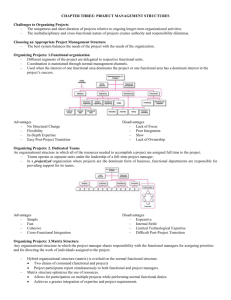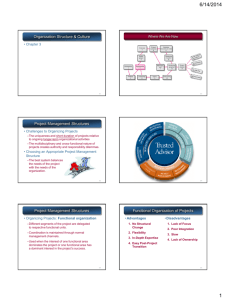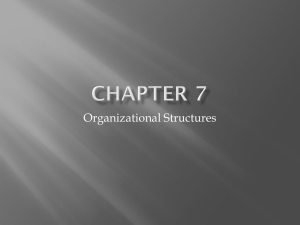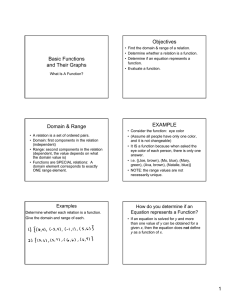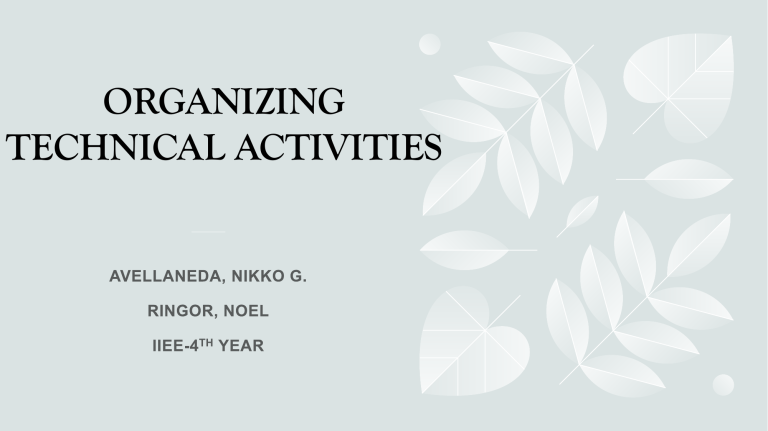
ORGANIZING TECHNICAL ACTIVITIES ACTIVITIES REASON FOR ORGANIZING ORGANIZING DEFINED THE PURPOSE OF THE STRUCTURE 1. It defines the relationships between tasks and authority for individuals and departments. 2. It defines formal reporting relationships, the number of levels in the hierarchy of the organization, and the span of control. 3. It defines the groupings of individuals into departments and departments into organization. 4. It defines the system to effect coordination of effort in both vertical (authority) and horizontal (tasks) directions. When structuring an organization, the engineer manager must be concerned with the following: 1. Division of labor-determining the scope of work and how it is combined in a job. 2. Delegation of authority-the process of assigning various degrees of decision-making authority to subordinates. 3. Departmentation-the grouping of related jobs, activities, or processes into major organizational subunits. 4. Span of control. the number of people who report directly to a given manager. 5. Coordination the linking of activities in the - organization that serves to achieve a common goal or objective. THE FORMAL ORGANIZATION INFORMAL GROUPS Organizations may be classified into three types. TYPES OF ORGANIZATIONAL STRUCTURE 1. Functional organization - this is a form of departmentalization in which everyone engaged in one functional activity, such as engineering or marketing, is grouped into one unit. 2. Product or market organization- this refers to the organization of a company by divisions that brings together all those involved with a certain type of product or customer. 3. Matrix organization - -an organizational structure in which each employee reports to both a functional or division manager and to a project or group manager. The different types of organizations, with their own distinct advantages and disadvantages, are briefly presented on the next page. FUNCTIONAL ORGANIZATION Functional organizations have certain advantages. 1. 2. 3. 4. 5. 6. THE DISADVANTAGES OF THE FUNCTIONAL ORGANIZATION PRODUCT OR MARKET ORGANIZATION MATRIX ORGANIZATION TYPES OF AUTHORITY THE PURPOSE OF COMMITTEES 1. 2. THANK YOU!
